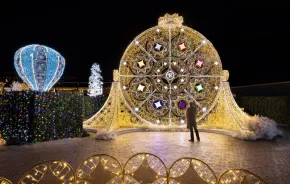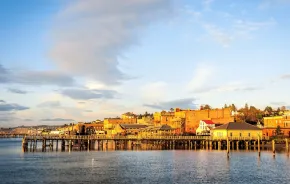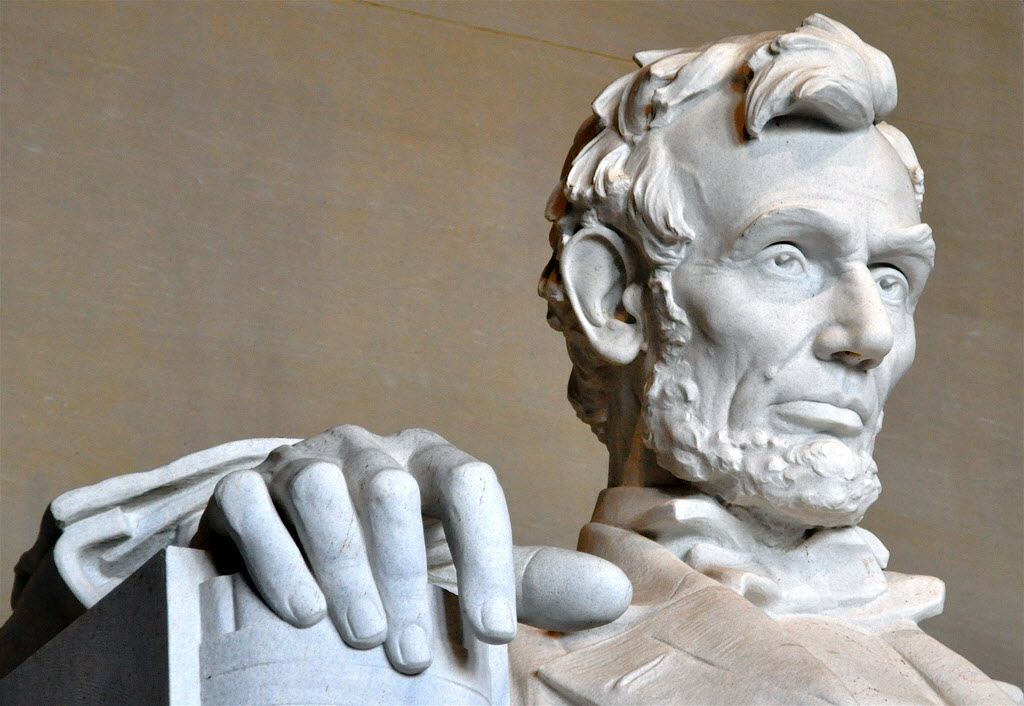
Planning a family trip to the nation’s capital is a daunting task. By checking off Washington, D.C.’s long list of museums and memorials, your family can be immersed in lives of countless astronauts, politicians, soldiers, artists, civil rights heroes and even international spies.
But here’s a revolutionary suggestion: Be single-minded. If you make President Abraham Lincoln the thread of a family vacation to the D.C. area this summer, you will weave a historical tapestry richer than disparate, single museum visits.
By visiting three sites — the Lincoln Memorial, Ford’s Theatre and Gettysburg — your kids will know the passion of the Great Emancipator who eloquently articulated the core rights at stake in the Civil War. They will feel the savagery of the Civil War, the bloody battles and sacrifices that preserved our young democratic Union. After my family took a Lincoln-focused trip to D.C., my three sons, ages 7 through 15 years old, better understood the impact of the Lincoln's presidency and the tragedy of his assassination, even though it happened 150 years ago.

Stop one: The Lincoln Memorial
The easiest, most obvious way to introduce your kids to Lincoln sits on the western end of the National Mall on the banks of the Potomac River. While students may have seen pictures of the Lincoln Memorial, the massive marble Greek revival structure that was dedicated in 1922, the sheer size and scale are hard to comprehend until seen in person.
When we went, my kids were quieted by its size and commanding presence. The nighttime view with Lincoln’s statue alit is many visitors’ favorite, so keep that in mind if your children enjoy staying up late into the evening.
A few facts to share with the family before you go inside: The 36 columns represent each of the states that were part of the Union at the time of Lincoln’s death in 1865. Directly ahead as you enter is the 19-foot high statue of a seated Abraham Lincoln; built in New York in 28 separate pieces in order to pass through the doorway of the memorial, it took several more months to re-assemble.
With one hand open, one fist clenched, representing both the gentle spirit and the steely resolve of our country’s 16th president, this grand sculpture is prime photo-op. (In fact, you may find yourself jockeying for position, which I guarantee will feel wrong with Lincoln gazing down at you, to get even one shot of your kids in front of Lincoln.)
To your left on the south wall is inscribed the complete 272 words of the President’s Gettysburg Address. Our family had a great discussion about how, when chosen and written well, even a few words can be powerful and inspirational. Above the inscription is a mural depicting the Angel of Truth freeing a slave.
If you go: The Lincoln Memorial is open to visitors 24 hours a day all year long. Park rangers are on site to answer questions between 9:30 a.m. and 11:30 p.m. Admission is free. It is administered by the National Parks Service.
Tips: Since there are no official opening and closing hours, during peak seasons, try to visit earlier in the morning to avoid crowds. Evening time with the statue alit is a beautiful time, though it can still be crowded. The National Park Service operates a handful of refreshment stands.
Pair with: a stroll through the somber Vietnam Veterans Memorial wall nearby.
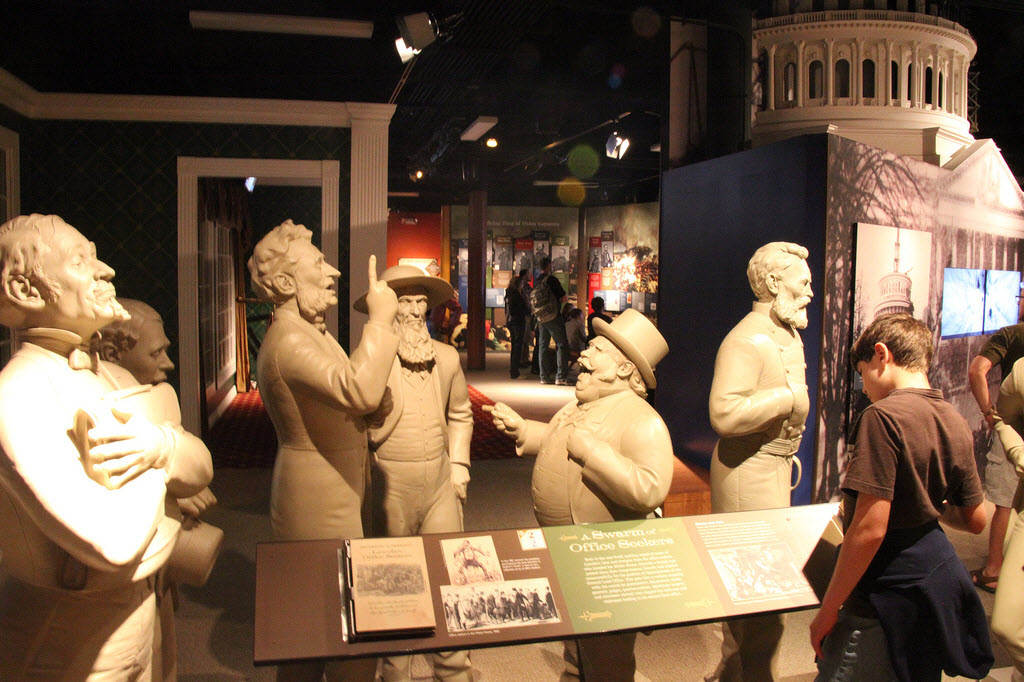 Ford Theatre | Credit: Tim Evanson on flickr CC
Ford Theatre | Credit: Tim Evanson on flickr CC
Stop two: Ford’s Theatre - Petersen House
Nearly two miles east of the Lincoln Memorial and north of the National Mall is the Ford's Theatre, site of President Lincoln's assassination. A visit here is actually two stops starting with Ford’s Theatre National Historic Site followed by the Petersen House across 10th St. NW, where Lincoln actually died.
Compelling for kids and adults alike, exhibits and videos tell the story of Lincoln’s presidency, his struggle to preserve the Union as northern and southern states disagreed about the legality of slavery and how the President maneuvered politically to the eventual emancipation of slaves. This nuance may be lost on younger children, but my adolescent and teenaged kids found the political gamesmanship interesting.
Displays recall the anger of Confederate sympathizers and the motivation behind the elaborate plot to assassinate Lincoln as well as Vice President Andrew Johnson and Secretary of State William Seward. Visitors can peer into the psyche of Lincoln’s assassin, John Wilkes Booth, a famous stage actor in his day.
Perhaps most hauntingly, the museum takes you through what happened that fateful Friday night at the theater. Following five days of jubilation in Washington, D.C. after Confederate General Robert E. Lee’s surrender at Appomattox, an exuberant but exhausted President needed a break. Theater lovers, he and his wife chose to see a light-hearted comedy. Booth, with a Derringer pistol in hand was able to enter Lincoln’s box and fire a .44 caliber bullet into the President’s head at close range.
 You will see the pistol in a glass case. You’ll see the small pillow stained with Lincoln’s blood. It is hard not to feel sad, even 150 years later. (That said, most of the kids including my own seemed unphased by the gore. Why? A topic for another time.)
You will see the pistol in a glass case. You’ll see the small pillow stained with Lincoln’s blood. It is hard not to feel sad, even 150 years later. (That said, most of the kids including my own seemed unphased by the gore. Why? A topic for another time.)
The theater upstairs was restored to its 1865 appearance and today is a working theater. Make sure to check the Ford’s Theatre website in advance for their show schedule - some productions tie in with Lincoln.
Petersen boarding house: Across the street is the Petersen boarding house where a wounded Lincoln was taken. It was clear to doctors the President would die so they sought a comfortable bed nearby. On a self-guided tour, visitors can see the front room where Mary Todd Lincoln mourned and the back room where Lincoln lay while some 90 visitors came in and out during the night.
The exhibits upstairs tell of the manhunt for Wilkes Booth and his accomplices, the challenges of reconstruction and the setback in civil rights progress that occurred in the years following Lincoln’s death.
If you go: Both Ford’s Theatre and the Petersen House are operated by the National Parks Service, but unlike the Lincoln Memorial, the theater has a timed ticket entry system. Same-day tickets can be obtained starting at 8:30 a.m. with the museum opening at 9 a.m. Audio tours cost $5. You can buy tickets in advance through Ticketmaster, though with a hefty service charge.
Tips: Located in the bustling Penn Quarter, there is no shortage of places to eat from the legendary Old Ebbitt Grill to a Hard Rock Cafe. Click here for a list of the numerous restaurants near Ford's Theatre.
Pair with: a trip to the International Spy Museum, two blocks east on F. St. NW.
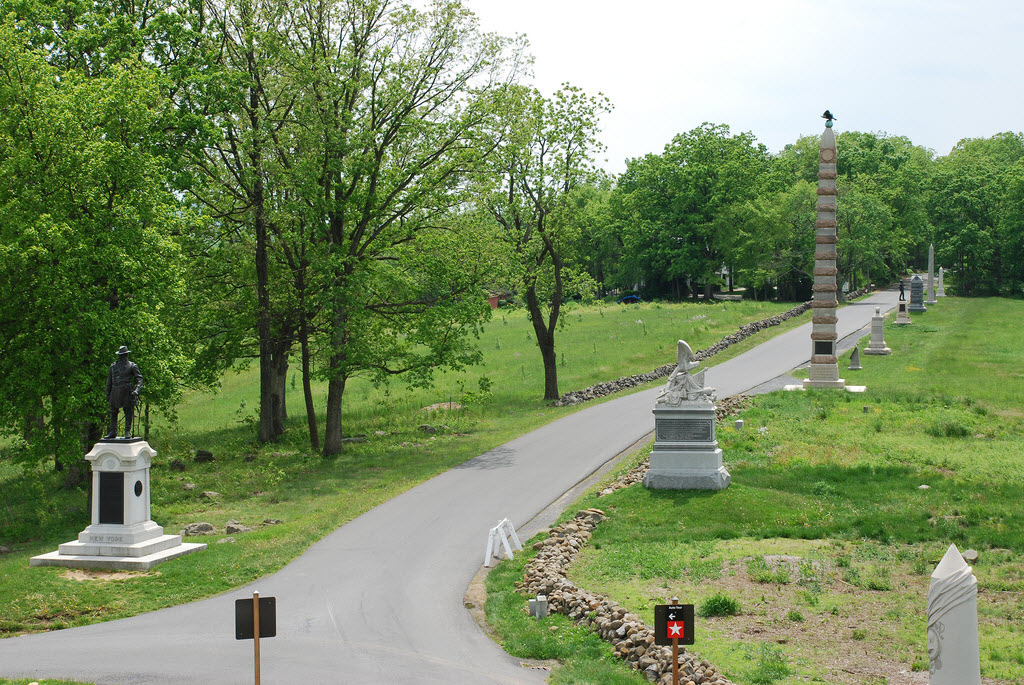
Stop 3: Gettysburg National Military Park
Next, take a day trip 90 miles north to Gettysburg, Pennsylvania, site of the 1863 battle — the war’s bloodiest — that is considered a turning point in the Civil War. This kind of ground-level history lesson, where your kids can freely roam historic battlefields or climb on rocks that soldiers used as shelter during fighting may be what they remember most. The battlefield stretches over 25 square miles. My children were quite happy to climb on top of cannons that were used in battle (it's allowed!). It's history they could touch.
That said, the fullest understanding of this hallowed place starts at the National Park Service Museum and Visitor Center. Opened in 2008 and privately owned, it will be new to adults who visited Gettysburg as young people. The 12 galleries include interactive displays of battlefield gear and uniforms, weapons, and thousands of other artifacts. The Gettysburg Cyclorama, a 359-foot circular painting done in 1883 and restored a decade ago depicts scenes from Pickett’s Charge, when Gen. Lee ordered nearly 13,000 Confederate soldiers into an open expanse of field under heavy Union artillery and rifle fire.
 Guided tours: As for the battlefields, since they have little signage, guided tours are helpful. You can buy the $30 CD set at the museum gift shop for a self-guided car audio tour. For $65 for a vehicle of six people of fewer, you can also have a two-hour privately guided tour in your own vehicle with a licensed guide. There are also various tour bus companies, including one with costumed actors and a double-decked bus. And for those who wish to pedal their way through history, Gettysbike offers guided tours on two wheels.
Guided tours: As for the battlefields, since they have little signage, guided tours are helpful. You can buy the $30 CD set at the museum gift shop for a self-guided car audio tour. For $65 for a vehicle of six people of fewer, you can also have a two-hour privately guided tour in your own vehicle with a licensed guide. There are also various tour bus companies, including one with costumed actors and a double-decked bus. And for those who wish to pedal their way through history, Gettysbike offers guided tours on two wheels.
Because of the human toll (some 51,000 people died) as well as the significant victory, President Lincoln was asked to deliver, “a few brief remarks” dedicating the Soldier’s National Cemetery four months later. There is a monument at the cemetery site where Lincoln delivered his Gettysburg Address.
If you go: The Museum and Visitor Center and Park grounds and roads are open daily except for Thanksgiving, Christmas and New Years; operating hours vary by season. Admission fees include the museum exhibits, film and cyclorama and is $12.50 adult, $8.50 for kids 6-12, free for children under 6 years old. National Park passes are not valid here. Advance reservations are recommended for guided tours and must be made 3 days in advance; call 1-877-874-2478. Standard two-hour auto tours are offered daily on a first come, first serve basis. For bus tour schedules, check the Museum and Visitor Center for the daily schedule or call 717-334-1124, extension 8023.
Tips: For food onsite go to the Refreshment Saloon at the Museum and Visitor Center. There are quaint restaurants and treat shops in historic Gettysburg, including homemade ice cream at Mr. G's Ice Cream Parlor; also the Gettysburg Cupcake Café. For dining, The Historic 1776 Dobbin House Tavern or the Blue & Gray Bar and Grill.
 Reading up on Lincoln
Reading up on Lincoln
Among the many thousands of books written on President Lincoln, University Bookstore in Bellevue recommends these few favorites for kids and teens.
Ages 4+: Lincoln and Douglas: An American Friendship, a picture book by Nikki Giovanni
Ages K+: I am Abraham Lincoln, by Brad Meltzer
Grades 3 -6: Who Was Abraham Lincoln? by Janet B. Pascal
Grades 5+: Abraham Lincoln: From the Log Cabin to the White House, a graphic novel by Lewis Helfand -
Grades 8+: Bloody Times: The Funeral of Abraham Lincoln and the Manhunt for Jefferson Davis, by James L. Swanson
The Address; a 1.5-hour documentary by Ken Burns that follows students at an alternative school in Vermont as they grow from learning, contemplating and memorizing Lincoln's Gettysburg Address.
Where to stay on your Lincoln chase
Washington, D.C.: Options near the National Mall range from the luxurious Hay-Adams with views overlooking the White House to the Hampton Inn - White House. Also, check VRBO, with nearly 400 properties in the DC area. Also, HomeAway.com and AirBNB.com.
Consider staying outside the city: In Alexandria, VA close to the King St. Metro station, or Rosslyn, VA, near the Rosslyn Metro stop. Both are also convenient to Reagan National Airport and all major car rental agencies.
Gettysburg; The Gettysburg Hotel, The Inn at Lincoln Square, or Wyndham Gettysburg.









